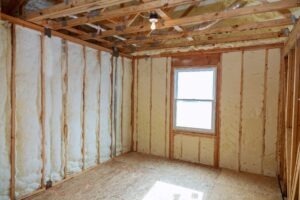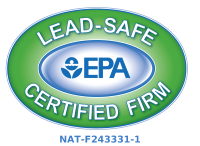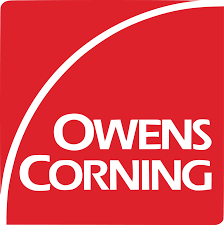Flat vs Pitched - Choosing the Right Style for Your Home
When it comes to roofing, one of the fundamental decisions Connecticut homeowners face is whether to opt for a flat or pitched roof. The choice between these two styles can significantly impact the aesthetics, functionality, and overall value of your property. Understanding the key differences and benefits of each roofing type is crucial for making an informed decision that meets your specific needs and preferences.
In this post, we will delve into the world of roofing, exploring the characteristics, advantages, and considerations associated with both flat and pitched roofs. By the end, you’ll be equipped with valuable insights to help you determine the perfect roofing style for your home.
So, let’s dive in and unravel the intriguing contrasts between flat and pitched roofs, empowering you to make the best choice for your roofing project.

Flat Roof
Advantages of Flat Roofs:
- Accessibility: Flat roofs are easy to access, making it simpler to perform maintenance tasks, clean gutters, and inspect for potential issues.
- Installation Flexibility: The flat surface of the roof allows for flexible installation options, including rooftop gardens, HVAC units, or solar panels.
- Cost-Effective: Flat roofs are generally more affordable to construct and require fewer materials, reducing overall installation costs.
- Space Utilization: The flat roof provides additional usable space, offering opportunities for outdoor living, gardening, or storage.
Disadvantages of Flat Roofs:
- Drainage Issues: Flat roofs tend to have less effective drainage systems compared to pitched roofs, leading to potential water pooling and leaks if not properly designed and maintained.
- Lifespan: Flat roofs may have a shorter lifespan compared to pitched roofs due to the increased exposure to the elements and potential water damage.
- Limited Insulation: Flat roofs may require additional insulation to prevent heat loss during colder months, which can add to the overall cost of the roofing system.
Pitched Roof
Advantages of Pitched Roofs:
- Efficient Drainage: The steep slope of pitched roofs facilitates efficient drainage, reducing the risk of water damage and leaks.
- Longevity: Pitched roofs tend to have a longer lifespan compared to flat roofs, thanks to their better resistance against weather elements and reduced chance of water pooling.
- Design Versatility: Pitched roofs offer various design options, including gable, hip, or mansard styles, allowing homeowners to choose a roof design that complements the overall aesthetics of their home.
- Energy Efficiency: The sloped design of pitched roofs allows for improved airflow, which can enhance ventilation and reduce the need for excessive cooling during hot seasons.
Advantages of Pitched Roofs:
- Higher Cost: Pitched roofs generally require more materials and labor during installation, making them more expensive than flat roofs.
Maintenance - Challenges: The sloped surface of pitched roofs can make maintenance tasks, such as gutter cleaning and roof inspections, more challenging and potentially hazardous.
- Limited Usable Space: The angle of pitched roofs limits the usable space underneath, making it difficult to create additional living or storage areas compared to flat roofs.
Life Expectancy: Flat vs Pitched Roof
The lifespan of a flat roof typically ranges from 10 to 30 years, depending on the materials used, installation quality, and maintenance practices. Flat roofs are more susceptible to water pooling and leaks, which can lead to premature deterioration if not properly addressed. Regular inspections, prompt repairs, and adequate maintenance can help extend the lifespan of a flat roof.
On the other hand, pitched roofs generally have a longer lifespan compared to flat roofs. With proper installation and maintenance, a pitched roof can last anywhere from 20 to 50 years or more. The sloped design of pitched roofs facilitates better water drainage and reduces the risk of water damage. Regular inspections, gutter cleaning, and addressing any issues promptly can help maximize the lifespan of a pitched roof.
It’s important to note that these are general estimates, and the actual lifespan of a roof can vary depending on factors such as the quality of materials, climate conditions, maintenance practices, and overall wear and tear over time. Consulting with roofing professionals and following recommended maintenance guidelines for your specific roofing system can help ensure the longevity of your roof.
In summary, flat-designed roofs are favored for their minimalist aesthetics, additional usable space, cost-effectiveness, and ease of maintenance. On the other hand, pitched roofs are better suited for traditional and classic architectural styles, providing superior drainage, durability, and design versatility. The choice between the two depends on the specific design requirements, climate considerations, and personal preferences of the homeowner.
Exploring options for building a space?
Maintenance
For both flat roofs and pitched roofs, several types of recurring maintenance schedules need to be factored in to ensure the longevity and functionality of the roofing system. These include:
- Regular Inspections: Conduct routine inspections of the roof surface, flashings, drainage systems, and other components to identify any signs of damage, deterioration, or potential issues. This helps in detecting leaks, cracks, loose or damaged shingles/tiles, and addressing them promptly.
- Cleaning: Regular cleaning of the roof surface to remove debris, leaves, branches, and other materials that can accumulate and potentially block drainage pathways or cause damage.
- Gutters and Downspouts: Cleaning and inspecting gutters and downspouts to ensure proper water flow and prevent water accumulation or clogging. Regular maintenance helps prevent water damage and extends the lifespan of the roof.
- Sealant and Coating: Applying or reapplying sealant or protective coating as needed to maintain the waterproofing properties of the roof and protect it from UV radiation, weathering, and other environmental factors.
- Trim Trees and Vegetation: Trimming overhanging branches or nearby vegetation can potentially damage the roof or impede proper water drainage.
- Snow and Ice Removal: In regions with heavy snowfall or freezing conditions, periodic removal of snow and ice buildup from the roof to prevent excessive weight, ice dam formation, and potential damage.
- Professional Roof Inspections: Periodically engage professional roofing contractors to conduct more thorough inspections and assessments of the roof’s condition, especially for older roofs or in case of suspected damage or significant weather events.
It’s important to note that the specific maintenance requirements and schedules may vary based on the type of roofing materials used, the climate of the region, and the manufacturer’s recommendations. Consulting with roofing professionals or contractors experienced with the specific type of roof is recommended to establish an appropriate and effective recurring maintenance plan for the flat or pitched roof.














